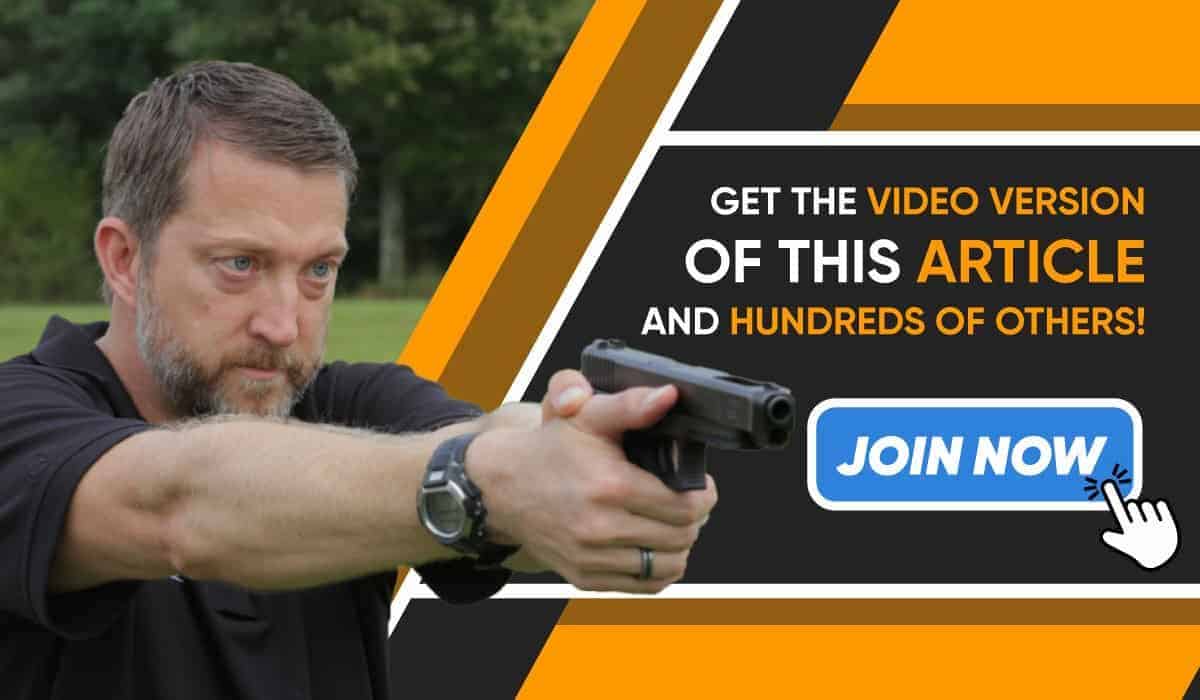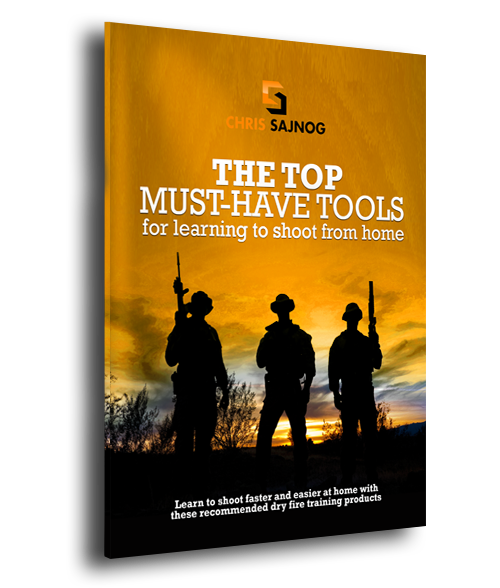The Firearms Training Notebook: Enhance Your Firearm Skills
Hey, what’s up, everybody! In this post, I’m going to be talking about the Firearms Training Notebook, a valuable tool for improving your firearm skills. Let’s go ahead and get started.
Navy SEALS are required to be experts in a variety of disciplines — shooting, demolition, Close Quarters Combat, skydiving, and SCUBA diving, just to name a few. That’s a lot of stuff to keep in our heads, especially when we may not use some of these skills for months at a time due to deployments or training in other areas. To accomplish this task, we’ve learned to keep logbooks to document the details needed to successfully employ these skills when the need arises.
Take for instance Dräger diving, which is the oxygen re-breather we use to enter harbors or approach vessels underwater without being detected on the surface. There are a lot of variables that go into each dive depending on the duration of the dive, salinity and temperature of the water, equipment we’re carrying, tides, currents, and more. So for each dive we do, we’ll write down everything we learned about that specific dive in a diving logbook. That way, next time we dive, we can look up past dives with similar characteristics to give us an idea of how much weight we’ll need for the rubber we’re wearing or how much oxygen we’ll use for that dive profile. This is what makes us good at what we do — learning from the past. The same theory applies to shooting.

Don’t be a DOPE
Most shooters have heard of a D.O.P.E. book: Data of Previous Engagements. It’s used by snipers to record every aspect of each shot they take so when they are faced with the need to take a cold bore shot, they have the information they need to increase their odds of an effective first shot. A D.O.P.E. book records air temperature, wind direction, and speed, specific ammo used, distance, and elevation — all critical things needed to engage targets at a distance. However, a range book is a more general reference log used to document training.
If you’ve read my book, How to Shoot Like a Navy SEAL, I refer to the importance of using a training notebook or range book to increase your training efficiency. I’ve also discussed it in several articles I’ve written and talked about it during each course I run. So what goes in a range book? A range book should contain all the vital information about your firearms training: date, weapon(s) used, number of rounds fired (or time for dry fire training), things you learned that worked for you, things that didn’t work for you and most importantly, things you need to work on next time.
Learning from the Past
For SEAL shooting, I’ve come up with the acronym S.E.A.L.
Safe – First and foremost the techniques you use need to be safe.
Effective – Your rounds need to produce the desired effect on target in the time needed.
Adaptable – Your training needs to be able to adapt to your environment.
Learned – Shooting is not magic. It’s a skill you learn and you need to learn from each time you train and continue the learning process by starting where you left off the last time you trained. This is where the “magic” comes from and this is what makes Navy SEALs the best at what we do.
A range book is simply a notebook that you keep with your weapons to document your training. You can use any size, shape, or style notebook you’d like. The key is to use the firearms training notebook each time you train and review it every time before you shoot. I also recommend having a main page that lists the current crux of your shooting program. For instance, I had “FRONT SIGHT FOCUS” written in large block letters on my main page for years because that was what would make me throw rounds — not concentrating on the front sight.
Using a range book is vital to your firearms training.
Then a few years ago, it changed to trigger control. I worked on the front sight focus so much that it was no longer a problem, but trigger control seemed to be causing most of my problems. So I changed my main page to “TRIGGER CONTROL!” so I saw it each time before I trained and it reminded me that I needed to pay special attention to that aspect of shooting. What you have as your crux could be any of the fundamentals of marksmanship, but every shooter, no matter how good they are, will have one thing that they need to concentrate on to elevate their game.
Example Range Book Log
10/11/13
Glock 17
200 rounds
Worked on drawing from thigh holster, accuracy (50 yards), and multiple target engagements.
***Remember to look at the next target and then bring my weapon to my eyes.
***Need to practice shooting while moving.
That’s all you need to do. Keep it simple and you’ll be more likely to use it each time you train. You’ll find the information you need next time you train much faster. Before you go to the range or dry fire, review your range book’s main and last page and take off from where you finished training last time. This way you’re not re-learning past lessons or mistakes and you’ll see your shooting skills rise exponentially. Also, remember to come up with a range plan of what you’re going to work on, so you don’t waste your ammo or your time.
Now that you know what a range book is, the key is to get one and start using the firearms training notebook! There’s no excuse for not using one. All you need is a piece of paper and pencil to get started, and I guarantee it will take your shooting to the next level.
Let me know in the comments below what you write in your training notebook.





Hey Chris,
I read this article about a range book and decided I’ve waited long enough to finally add a range book to my training. I started researching RiteintheRain and found that they had a tactical sub section of products including a basic range book here:
http://www.riteintherain.com/inventoryD.asp?item_no=9201T-KIT&CatId={10BF3C78-0FA1-45E8-92A7-3F040BAA0998}
I also found that they have loose leaf replacement range cards here:
http://www.riteintherain.com/inventoryD.asp?item_no=912T&CatId={A91BB54D-1CA7-4528-8981-6AC639DD11D4}
I’m just concerned that I’m going to get this basic range book and in short time feel the need for something more organized and detailed. I found some really detailed range books at http://ustacticalsupply.com/ I really like the Modular Sniper Date Book but as I read further I see that there is a generic data book for all calibers, a specific data book to your caliber and load, then Mil-Dot Master card, Slope Doper, and finally last but not least MilspecXR Field Density Altitude Compensator. I feel like I just opened a can of worms.
Can you help shed some light on a good first step to adopting a range book into my program?
Thank you,
Derek
Derek,
Good call to start using a range book to improve your shooting. As for which one to use, thats shooter specific. I can say that I use blank sheets of paper so I can add whatever info I think is important each day, draw pictures, whatever.Also, some of the examples you’re looking at are for very specific uses – A Range Card is used by snipers/spotters to map and range out their battle space to be able to acquire and engage targets quickly and accurately. Also, like I mentioned in the article, DOPE or Data books are log books for the gun and a Range Book (as I call it) is a training log book for you.
If you try searching the internet for a “Range Book” I’m guessing you’ll come up empty as it’s a term I may have coined. My advice is a simple notebook like the Field Notes from ITS Tactical.
Cheers – Chris